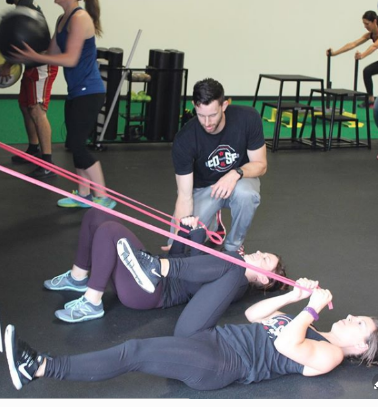Even though your reasons for waking up early, working out, and eating well are different than mine—and different than the person training next to you—doesn’t mean we all don’t feel the same things when going through our fitness journeys.
Excitement when you hit a big lift.
Happiness when you reach your goal.
Fear when you start something new.
And frustration when your progress stalls.
When your progress stalls or you hit a “plateau,” it’s too common to jump ship and abandon your current program. Maybe you haven’t put weight on your deadlift in the past month or you haven’t lost weight during the past couple of weeks. With this article, I’m here to tell you to take a deep breath and ask yourself three important questions before you re-route your fitness journey. Hopefully it will ease your mind, give you a plan, and help you keep moving forward.
1. Are You Being Consistent?
Let’s face it: if you aren’t being consistent with your workouts, nutrition, and recovery efforts, this is where you need to start to push past your plateau. Even though media and trendy fitness and nutrition products may make you feel otherwise, making changes to your body is going to take consistent effort over time. It’s easy to get frustrated at your lack of progress and harder to see your lack of consistency. If you feel like you struggle with consistency in your training and nutrition, answer the questions on the list below and see how you can set yourself up to be more consistent and stay on track towards reaching your goals.
-What is your fitness goal?
-Why do you want to reach your goal?
-Do you have ways to track your workouts and nutrition?
-Can you keep yourself accountable for being consistent with your training and nutrition?
If not, do you have anyone in your support system that keeps you accountable?
Hopefully answering the questions above can help guide you in the right direction towards becoming more consistent in your efforts to reach your fitness goals.
2. Is Your Training Specific Enough?
Did you notice when you first started working out progress occurred at a much faster rate? When you’re relatively untrained your body will adapt much easier to any stimulus it’s given. When you first start lifting, it’s easy to add 5-10 lbs. onto your deadlift each week. When you first began your fat loss journey, you were watching your weight steadily drop down each week. Or if you decided that you were going to put on muscle, it seemed like you would be the size of Arnold if you continued putting on mass at the rate you were.
You’re then quick to learn that as you become more trained you find out the gains don’t come as easy as they once did. Your body gets better at managing the stress you place on it during training and you now must give your body more specific stressors in order to accomplish what you want in the gym. This is one of the biggest realizations you must make when you progress from a beginner to an intermediate lifter or exerciser.
Strength gains will now require you to lift at higher intensities or with a better-planned progression.
Fat loss may now require you to work at higher intensities or add in more high-intensity interval training.
And adding on mass now means you must drastically increase the amount of training volume you have each week.
Don’t forget that consistency is still the priority and a well-thought-out program done inconsistently still isn’t as good as non-specific program performed consistently.
If you’ve been training for a while, saw great results early on, and feel like you have plateaued, keep being consistent and take some time to learn if your program is applying stressors to your body that are specific enough to give you the results you want.
3. Do You Have Short-Term Goals?

Goal setting is an important piece of staying committed to making exercise part of your life. Goals can simply be broken down into long-term and short-term goals.
An example of a long-term goal would be to total 1000 lbs. in a powerlifting meet.
An example of short-term goals that assist in reaching that long-term goal would be things like:
-Mastering your deadlift technique
-Hitting 405 lbs. on your deadlift
-Gaining 10 lbs. to compete in the higher end of your weight class
These short-term goals allow you to mentally and emotionally stay in the game while working towards your long-term goal. Celebrate small wins and success, and you’ll find you have more patience and confidence as you work hard to reach your long-term goals. This may also make plateaus not feel like plateaus anymore, because you’re seeing progress in areas you weren’t previously paying attention to.
In Summary
Plateaus can be frustrating and can even cause you to scramble and try to “change up” everything that you’ve been doing in the gym. Before you do a complete 180 and give your workout plan a makeover, ask yourself three important questions:
1. Are You Being Consistent?
2. Is Your Training Specific Enough?
3. Do You Have Short-Term Goals?
Your answers to these three questions will allow you to step back and realize the changes you need to make are probably minor—and with those minor changes, you’ll find yourself back on track towards reaching your long-term fitness goals.
Need Help Getting in a Consistent Workout Routine?
Try Our Adult Group Training Live and On Demand Classes!

About the Author

Mike Sirani is the Co-Owner of Capital District Sport and Fitness in Round Lake, NY. He’s an experienced strength and conditioning coach and massage therapist who has spent the majority of his career in Boston training professional, collegiate, and high school athletes of various sports, as well as helping general fitness clients of all backgrounds learn to move better and get stronger than ever before. He earned his Bachelor of Science Degree in Applied Exercise Science, with a concentration in Sports Performance, from Springfield College and completed a highly sought after six-month internship at Cressey Sports Performance. Mike specializes in teaching athletes and general fitness clients to get the most out of their bodies by enhancing their movement quality and creating exercises programs that allow you to get stronger, faster, and more powerful in a safe and effective manner.

